By Charlene Muhammad CHARLENEM
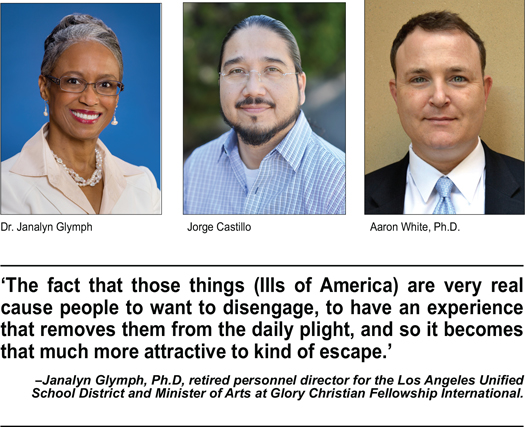
Alcohol is widely used to ‘turn up,’ ‘get the party started,’ or some say simply to relax, but excessive drinking and alcohol abuse render devastating results far different from the drug portrayed as euphoria in a bottle.
Statistics indicate an average of six people a day die of alcohol poisoning in the U.S. Seventy-six percent (three in four) alcohol poisoning deaths occur among adults 35-64. Last year, nearly 10,000 people were killed and approximately 290,000 injured in drunk driving incidents.
Yet, people keep reaching for their favorite ‘spirits.’
“America won’t put down the bottle because there’s plenty to escape from,” said Janalyn Glymph, Ph.D, retired personnel director for the Los Angeles Unified School District and Minister of Arts at Glory Christian Fellowship International.
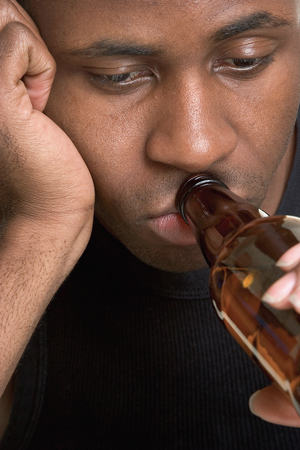
“I think the fact that there are so many ills across America–poverty, healthcare, violence in our streets, fear of terrorism, displaced families–the list goes on and on and on of very crippling things that are a part of our 2016 environment, and across America, communities have different abilities to rise above,” Dr. Glymph said.
Much of that comes from within, but also from the kinds of oppressions that actually exist, she told The Final Call. “The fact that those things are very real cause people to want to disengage, to have an experience that removes them from the daily plight, and so it becomes that much more attractive to kind of escape,” she said.
Disparities
Alcohol Justice is a watchdog group based in California, the industry’s biggest market. According to Jorge Castillo, advocacy director, Whites across the state drink the most, followed by Latinos, then Blacks.
Nationally, 20 percent of America’s population consumes 80 percent of the alcohol in society, he said. Though Blacks and Latinos drink the least, they have less access to health services and health care. They are also segregated more economically and politically, which means they suffer the most harm, Mr. Castillo said.
A 2014 study by researchers with the National Institutes of Health found that Blacks are more likely to encounter legal problems from drinking than Whites, even at the same levels of consumption.
“Less Drinking, Yet More Problems: Understanding African American Drinking and Related Problems” further found that low-income Black men, in particular, appeared to be at the highest risk for alcoholism and related problems due to complex interaction of residential discrimination, racism, age of drinking, and lack of available standard life reinforcers, such as stable employment and financial stability.
“Clearly, this is a complex issue that involves interactions among numerous sociocultural risk factors in a vulnerable subset of African Americans with few resources to address their problems,” stated Aaron White, Ph.D., senior scientific advisor to the National Institute on Alcohol Abuse and Alcoholism (NIAAA) Director.
Self-responsibility
On April 4, the Foundation for Advancing Alcohol Responsibility (Responsibility.org) launched a new campaign to spark a national conversation about alcohol responsibility.
“Responsibility Starts with Me,” designed to kick off April’s designation as “Alcohol Responsibility Month,” highlighted the organization’s recent study among American adults to learn what personal responsibility, especially when it comes to consuming alcohol, means to them.
Researchers found that three out of four American adults (76 percent) believe responsibility starts with “me,” and 68 percent believe it is everyone’s own personal responsibility to address the harmful consumption of alcohol.
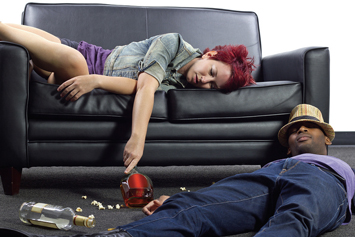
“For 25 years, Responsibility.org has led the fight against drunk driving and underage drinking, and I am excited for this new campaign highlighting the importance of personal responsibility when it comes to alcohol. Responsibility starts at the individual level,” said Mike Keyes, president of Brown-Forman’s North American region and chair of Responsibility.org’s board of directors in press release.
What about corporate accountability? activists argued. It is disingenuous and hypocritical, for Responsibility.org to claim leadership in the fight to eliminate drunk driving, underage drinking, and responsible consumption of alcohol given that the national not-for-profit is funded by America’s leading distillers (Bacardi U.S.A., Inc.; Beam Suntory Inc.; Brown-Forman; Constellation Brands, Inc.; DIAGEO; Edrington; Hood River Distillers, Inc.; and Pernod Ricard USA).
“Eighty percent of the alcohol that you see at a grocery store or liquor store in the United States is controlled by three companies,” Mr. Castillo told The Final Call. They are Inbev of Belgium, which owns Budweiser, and Miller Coors of England, which purchased Coors, and the third company, DIAGEO, is based in London, England he stated.
“They do fund organizations and propaganda programs that place responsibility on the individual so they can wash their hands of accountability. We feel that the ones that need to be held accountable and responsible are the corporations and distributors and the retailers, but they want to put the blame on us,” Mr. Castillo argued.
He continued, “They have no allegiance to any government. They have no allegiance to anyone but themselves, and every year what they want to do is increase profits.”
But higher earnings for them means more harm for the American people, Mr. Castillo continued.
“In California, one person dies every hour because of alcohol, and that has to do with illness, accidents and other factors,” he stated.
Big alcohol, big money, big fallout
Alcohol corporations have been able to grow and expand because they slowly pass laws to deregulate their products, said Mr. Castillo.
That makes it harder and harder for people to let go of the bottle, or more eager to reach for it. Companies can sell alcohol on every corner, in barbershops, clothing stores, any communities they choose to saturate to increase profits, Mr. Castillo said.
To add insult to injury, big alcohol companies only pay $350 million in taxes, but taxpayers are left holding a $13 billion tab, he stated.
“It’s not about individual responsibility. It’s not about necessarily how it affects everyone individually. It’s about how there’s a mechanism at work that exploits our communities and makes it easier to sell the product, and the reason many people become addicted to this product in many ways is because they’re being marketed through the TV, through computers, through the radio, through sporting events, to little children,” Mr. Castillo argued.
“They’re trying to normalize it, and make it seem like alcohol belongs at a quinceañera (a coming of age celebration for a Latina’s 15th birthday), at a birthday party, when you go to the park with your family, when you go see sports … but we believe that it’s abnormal, and it’s not right,” Mr. Castillo said.
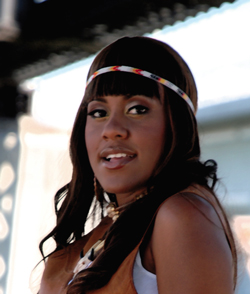
YoNasDa Lonewolf, half Native American and half Black daughter of the late, great Oglala Sioux activist Wauneta Lonewolf, recommended tackling the problem by first educating those being highly affected by alcoholism.
“It’s one of our number one killers all throughout Indian country. Alcoholism has torn up so many families as well as our generation is keeping a lot of things alive because of alcoholism,” she said.
She said the problem stems from generational trauma and Native Americans’ inability to come back from wickedness heaped on them by their former slave masters.
“We have not come back from the taking of the land, the raping of our women, the converting children to boarding schools and to their Western ways, and the trauma they had to deal with,” Ms. Lonewolf said.
They were forced to adopt Christianity or Catholicism in a very savage way, and many were separated from their families, which produced a lack of hope, because many Native Reservations are far-removed from inner cities.
“It’s out of sight, out of mind, so they were forced to depend on devices that the government was providing for them, and alcohol still is a huge, huge killer amongst my people,” Ms. Lonewolf said.
While alcohol is actually banned throughout her Oglala Sioux Tribe in Pine Ridge, South Dakota, it is legally sold in walking distance, less than a mile away from the border of Nebraska, she said.
Alcohol Justice is working with the Tribe in the fight for their lives. According to the organization’s statistics, two-thirds of the Native adult population are alcoholics, and one-fourth of the children born there suffer from Fetal Alcohol Spectrum Disorder (physical, mental, behavioral, and/or learning disabilities with possible lifelong implications).
A state of emergency has been declared throughout many Native American tribes, Ms. Lonewolf said.
First Nation of Attawapiskat issued one on April 9. That day, 11 residents including one 10-year-old reportedly attempted suicide. In all, there have been more than 100 attempted suicides, one fatal, according to Indian Country Today Media Network.
“… They are getting really drunk, and getting on drugs in order to get to a place of such hopelessness, where they are killing themselves,” Ms. Lonewolf said.
The only tribe not dealing with suicide on that level is the Seminole Nation of Oklahoma, which has found a way to stop the problem by securing their entire reservation with a gated fence and several rigorous checkpoints, the activist said.
That effort blocked access to tribal members from outsiders and their problem ceased. “When we look at the Teachings of the Most Honorable Elijah Muhammad, and he says we must separate from our enemy, the Seminole is a pure, a great, phenomenal example of separation,” Ms. Lonewolf stated, referring to the Nation of Islam patriarch.
Alcohol and gun violence

In 2006, Dr. Glymph coined a peculiar term after she drew a link between alcohol effects on gun violence.
In preparation for a lecture regarding Blacks, rhetoric, and stereotypes, she recalled various childhood memories from songs, to TV shows, to commercials. She thought of actor Billy Dee Williams and his famed Colt 45 malt liquor commercial, then literally stumbled on the rest.
“Gun beers” derived from names of malt liquors (which have higher alcohol content than most traditional domestic beers) with corresponding gun names.
“I thought hah! Colt 45; that’s also the name of a gun, Magnum. Hmmmm! That’s 357 Magnum. And then I thought King Cobra! Well, that’s a King Cobra 38 Special. And then I thought about the 40, and then I thought about the Glock 40,” said Dr. Glymph.
Her point then and now is “don’t get caught up in the hype.” She said she believes in individual responsibility, but reminded that people cannot always rely on those who have different motives and who are selling a product, to present it in ways that present the whole picture.
“I’m not mad at beer, and I’m not mad at beer manufacturers. All I’m saying is that there was a huge marketing attempt to … actually show power, and often times in our communities, what we most desire is power, so guns become a medium associated with having control, taking power,” Dr. Glymph stated.
“I just thought is it coincidental or is it deliberate that in our African American and Latino communities, that the semblance of power can be seen in the huge marketing campaigns for these beers, which by the way are all malt liquor and therefore have a higher alcohol content than most traditional domestic beers,” Dr. Glymph said.
“But of course, they’re going to continue to sell when we continue to buy,” she added.
Social control
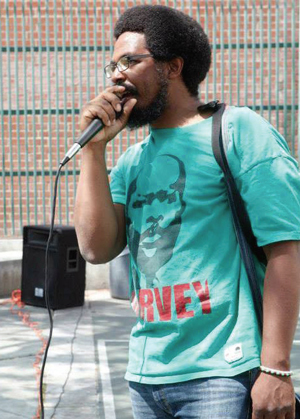
As Charles Porter sees it, multiple factors contribute to the problem, particularly in Black, Brown, and low income neighborhoods.
In his work as prevention coordinator for United Coalition East Prevention Project, he identified one of the problems as controlling what goes in and out of neighborhoods. UCEPP was founded in 1996 to address the problems related to alcohol and other drugs in the Central City East area of downtown Los Angeles, commonly known as “Skid Row.”
Inner cities of America are plagued with too many liquor stores, but efforts at community control and city planning have made some difference, Mr. Porter noted.
For instance, activists led by the Community Coalition mobilized to stop more than 150 liquor stores from being rebuilt in South L.A. after many were burned down during the 1992 Rodney King Rebellion.
“Part of it was in regards to tensions with the (Korean) store owners and community relations, but another piece was that community members had been complaining for years about the over concentration of alcohol outlets, and the related behaviors,” Mr. Porter said.
People saw a direct connection to the over consumption of alcohol and violence in their community, and violence being connected to liquor stores, which is still prevalent today, he stated.
“We see memorials set up around the liquor stores where people have been killed. I think that for a while, people just accepted that as the norm. ‘Be careful when you go to the liquor store,’ but the liquor store is also the grocery store,” he said.
He concurred that drinking is connected to oppression, poverty, and people trying to self-medicate to escape. “That’s documented in some of the things you hear in music, which is another negative exposure a lot of our youth get–some of it intentional with people trying to make money off of it, and some not.”
“But, you hear people talk about why they need to drink or when something goes bad, then everything’s better when they’re sippin’ on something, which doesn’t change your conditions that you’re living in, but it normalizes that behavior,” Mr. Porter observed.
Even on the plantations, on the weekends, they encouraged the slave to drink so they wouldn’t come together and rebel,” he said. Likewise today, where joblessness is rampant in Black and Brown neighborhoods while liquor stores and access to alcohol flourish, he said.
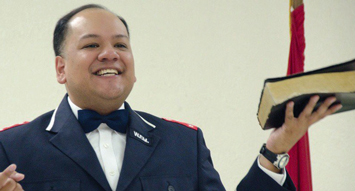
Alcohol or “fire water” was also one of the first things given to the Indigenous Peoples, said student Minister Abel Muhammad, Representative of the Nation of Islam and the Honorable Minister Louis Farrakhan to the Spanish speaking population.
It was used first in different forms by the colonizers to hamper Indigenous Peoples’ thinking and actions, he said. In many cases, colonizers used it justify why the Indigenous should be considered lessor type human beings, because of their behavior once they were intoxicated, and it’s something that continues through today, Min. Muhammad stated.
Unfortunately, it has become a part of their culture, like a rite of passage. “They have even gone so far in recent years as to use Emiliano Zapata to promote the drinking of alcohol, even a campaign which featuring the Reconquista or the Reconquering of the lands taken from the Mexican people under the banner of a liquor manufacturer (Corona),” he stated.
“It’s really saying if you want to be free, if you want liberation, drink this drink, and it’s interesting that it’s gone that far into the psyche of our people where Pancho Villa, who didn’t drink alcohol, is somehow seen as this gun-toting, liquor-bibbing individual,” he added.
Loosening the grip
Challenge the belief that businesses need to sell alcohol to make money without weighing the public impact, Mr. Porter said.
“Alcohol is more prevalent because it’s legal, and when things are legal, there’s less perception that it’s risky or harmful,” he stated.
Alcohol Justice advocates people take a stand and protect themselves and their neighborhoods by speaking out, organizing, and mobilizing. “We’re saying this is a social justice issue … We have a right to decide how our children grow and develop,” Mr. Castillo argued.
Take a look at the images of cultural icons as a start, Mr. Muhammad offered.
“At the root of it, if we really want change, it starts with knowledge, with education, with people knowing the truth,” he stated.












